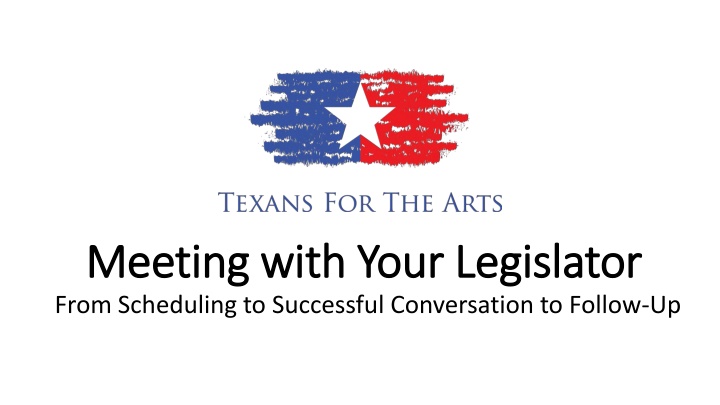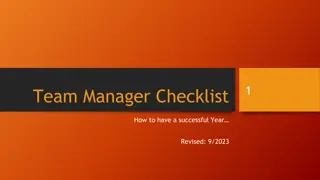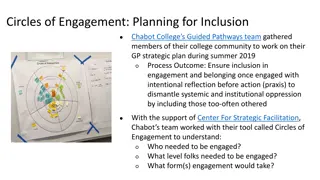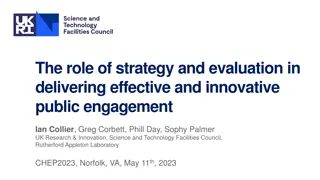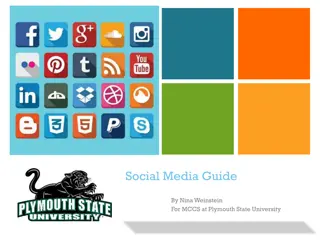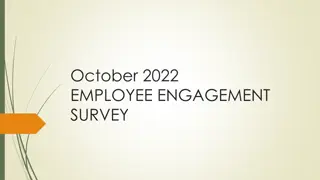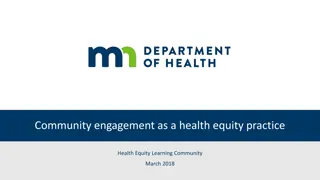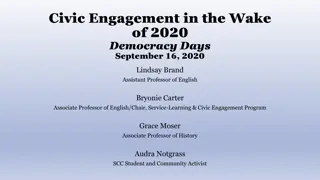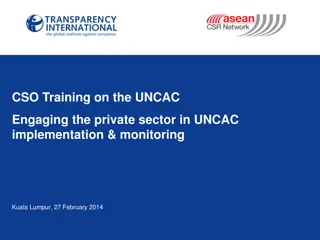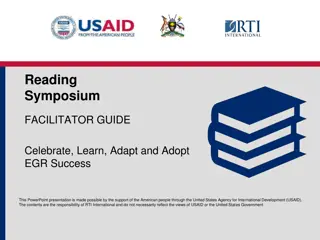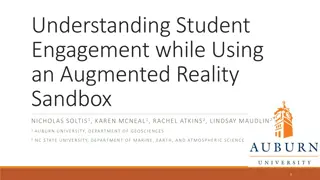Guide to Successful Engagement with Your Legislator
Learn how to effectively schedule, prepare for, and conduct a meeting with your legislator. Discover tips on making connections, telling your story, and supporting your requests with data to maximize the impact of your advocacy efforts in the realm of arts and culture.
Download Presentation

Please find below an Image/Link to download the presentation.
The content on the website is provided AS IS for your information and personal use only. It may not be sold, licensed, or shared on other websites without obtaining consent from the author.If you encounter any issues during the download, it is possible that the publisher has removed the file from their server.
You are allowed to download the files provided on this website for personal or commercial use, subject to the condition that they are used lawfully. All files are the property of their respective owners.
The content on the website is provided AS IS for your information and personal use only. It may not be sold, licensed, or shared on other websites without obtaining consent from the author.
E N D
Presentation Transcript
Meeting with Your Legislator Meeting with Your Legislator From Scheduling to Successful Conversation to Follow-Up
Before the Meeting Before the Meeting
Schedule the Meeting Schedule the Meeting Call or email your legislative office and request to schedule a meeting with the legislator and/or the staff member that handles arts issues. If you call, the staff may schedule the meeting over the phone or they may connect you with the appropriate person to email your request to. If you know the contact in the office, you can go ahead and send an email requesting a meeting. There are meeting request templates for phone and email on the Advocacy Resources page of the Texans for the Arts website. Understand that you may meet with staff members rather than the legislator. This is not a bad thing. Staff members are familiar with the issues and advise the legislator.
Prepare Prepare Do some research on your legislator. Find out what issues are important to your legislator, whether your legislator has been supportive of the arts in the past, etc. Consider signing up for your legislator s newsletter to keep up with the latest updates. Gather supporting information for the issues you are planning to speak about. Make sure that you have any bill numbers related to your requests to provide to your legislative office.
During the Meeting During the Meeting
Make a Connection Make a Connection If this is your first meeting with this person, don t launch right into content. Find out a little bit about the person you are meeting. See what kind of connections the person you are meeting with has to the arts. Even if the person doesn t immediately think of themself as an artist, there may be something there (i.e. played in high school marching band, child takes dance class, etc.). This is part of building a relationship and rapport.
Tell Your Story Tell Your Story Your voice is powerful, and your stories matter! Let your legislator or the staff member know how the issue(s) you are discussing affects you and/or your organization. What do the arts mean to you? This will help to put a face to the issue and personalize its impact for the person you are meeting with.
Support with Numbers Support with Numbers Back up your story and requests with data in order to make a strong case for your position. You can use both general data on the arts impact on the economy and specific data that supports the requests you are making. If you need help finding data, visit texansforthearts.com/advocacyresources or contact Texans for the Arts for specific assistance.
Other Tips for the Meeting Other Tips for the Meeting Tell the truth; don t make things up. If you don t know the answer to a question, let the person know that you will find out. (Then make sure you do!) Be respectful of the time allotted. Make sure that you are clear and concise, making the best use of that time and then finishing on schedule. Understand that the people you are meeting with may not have the background on the issue you are raising; you may need to bring them up to speed.
After the Meeting After the Meeting
Leave Something Behind Leave Something Behind Leave a document behind that includes salient information relating to the topics you are discussing. Make sure the information is clear and concise so that it is easy for the legislative office to use. This information may include details on why the art matters such as their impact on the economy, what specific items you are asking your legislator to do or support, the impact that support of these items will have, etc.
Follow Up Follow Up Don t let your meeting be the last conversation with your legislative office. Follow up immediately after your visit with a thank you and any additional materials. Follow up again in a month or two to check back in and remind the office of the issues that you discussed. Feel free to reach out at any time as you see issues, bills, and more come up that concern you. Consider inviting your legislator to an event. Remember, you want to build a relationship with the office.
Want additional information or have Want additional information or have questions? Contact Texans for the Arts questions? Contact Texans for the Arts at at info@texansforthearts.com info@texansforthearts.com
